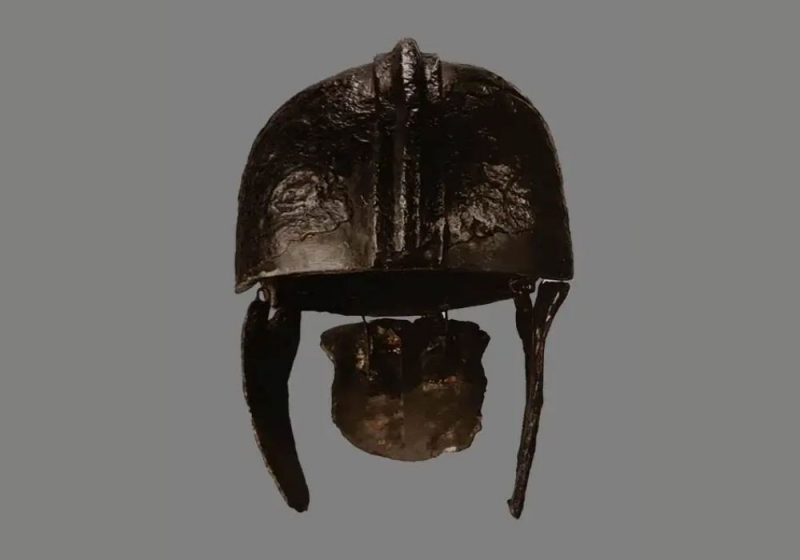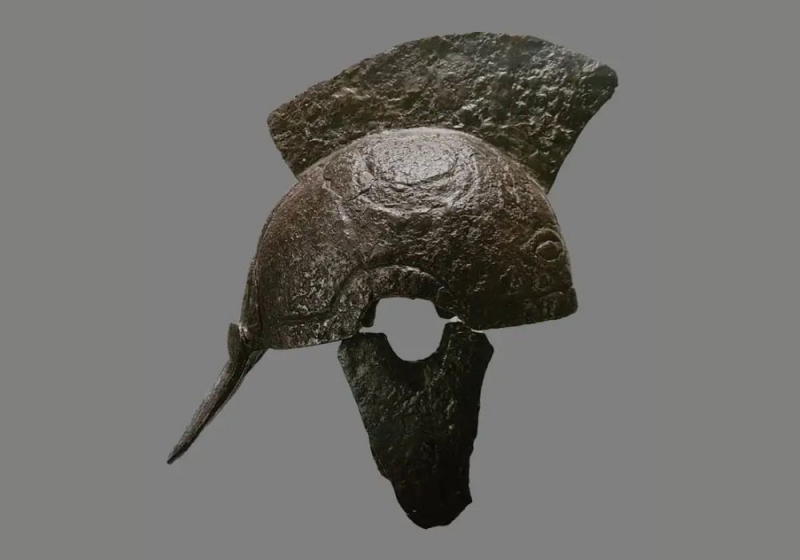Intercisa-Simple Ridge Type: The “Eastern”
Roman helmet designs underwent a significant change between the end of the third century and the start of the fourth century. In favor of helmets with a pronounced steppe and Sassanid Persian influence, the previous helmets with their Celtic influence were dropped. The Tetrarchy's effects, which included a transfer of political, cultural, and economic dominance to the Eastern regions of the Empire, may have contributed to this "orientalization." State-run armor factories were developed as a result of this transition, which resulted in the creation of helmets that could be produced fast and provided a lot of protection. These Roman helmets, which date from the early fourth to the early fifth centuries CE, are now referred to as ridge-type helmets.
The bipartite bowl architecture of the Intercisa or Simple Ridge Type is composed of two half skulls. There is a front-to-back ridge piece that connects them. To connect a lining and assemble the parts, holes were drilled into the bowl edge, neck guard, and cheek guards. Matching oval forms were frequently cut into the upper edge of the cheek guards and the lower side of the bowl to serve as the ears. The most well-known specimen of this kind features a huge iron crest that stretches from front to back.











